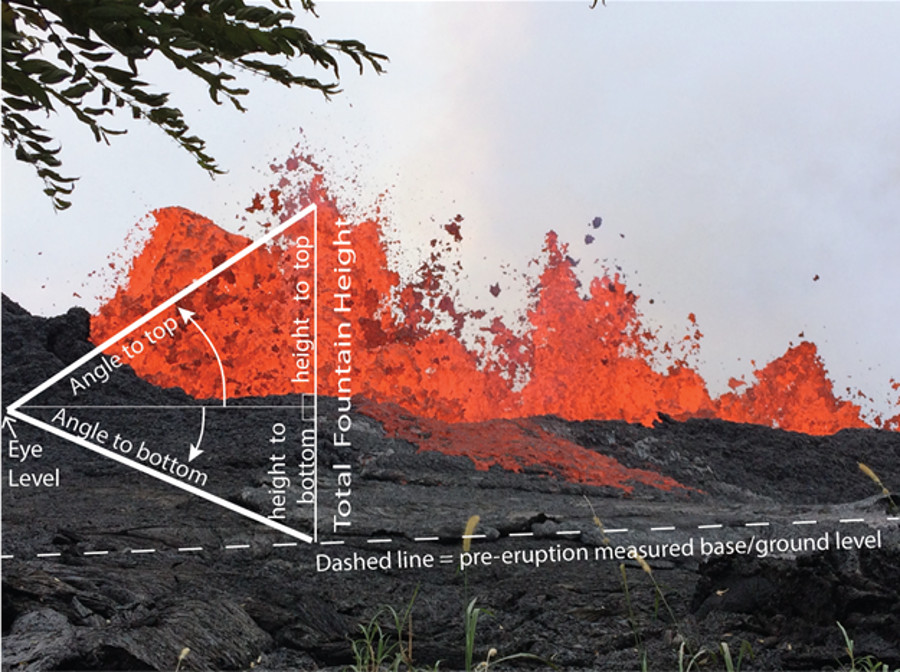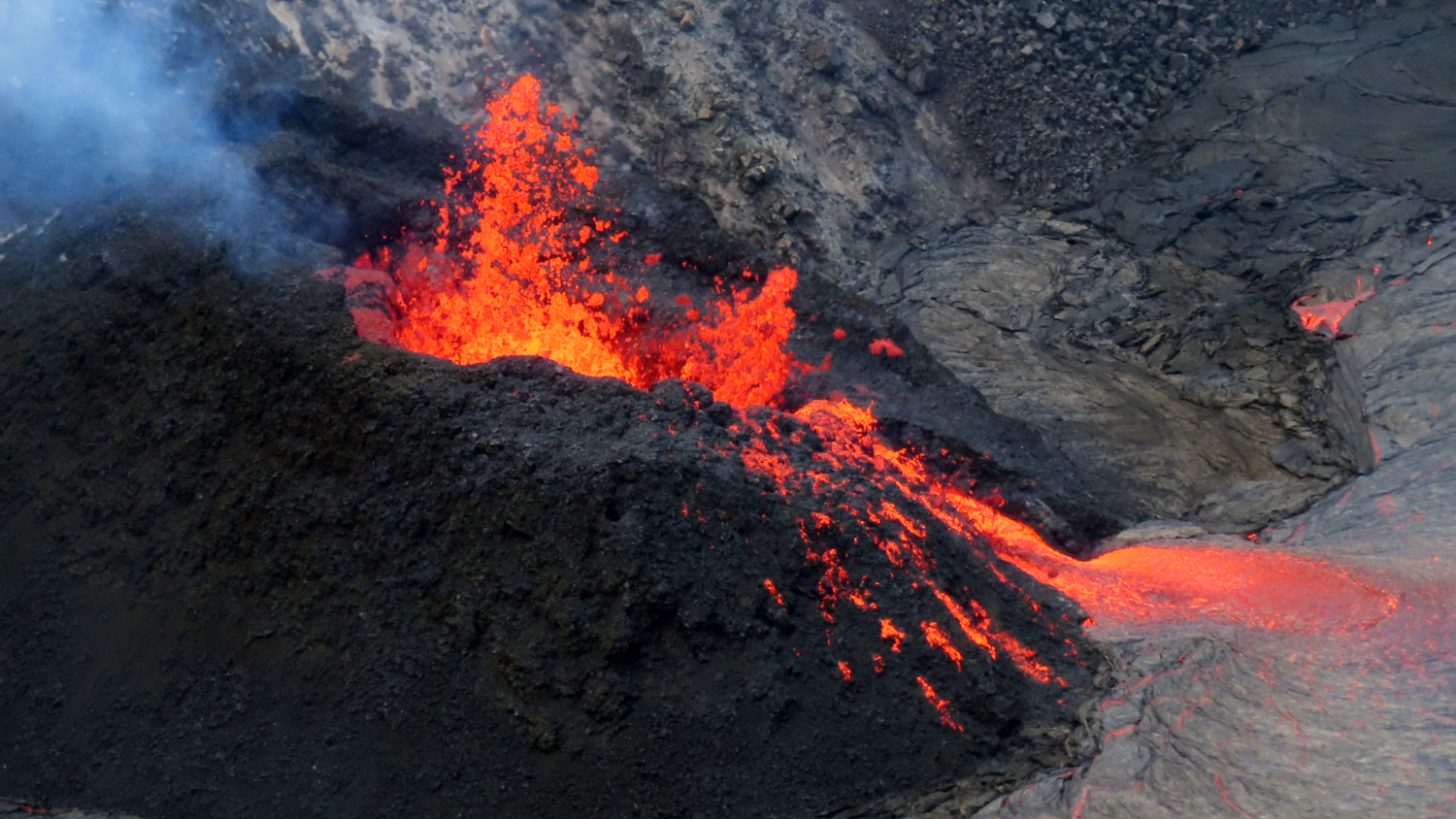
USGS: “Annotated image showing how lava fountain heights are measured using a trigonometric equation. Geologists measure two angles, from eye-level to the top and bottom of the lava fountain. These angles, and the distance between the geologist and the fountain, are used in a trigonometric equation to determine heights of the top and bottom portions of the fountain. The two values are added together to get the total lava fountain height.” (USGS photo of fissure 22 taken during the 2018 Kīlauea lower East Rift Zone eruption on May 20, by L. DeSmither)
(BIVN) – As the latest eruption of Kīlauea volcano reaches the one-month mark, the USGS is detailing how it determines the height of lava fountains, like those currently observed inside the Halemaʻumaʻu summit crater.
This week’s Volcano Watch article was written by Hawaiian Volcano Observatory Geologist Carolyn Parcheta:
The rapid onset of the current summit eruption sent USGS Hawaiian Volcano Observatory field crews running to grab their gear and head for the rim of Halemaʻumaʻu on the afternoon of September 29, 2021. The onset of an eruption is frequently the most dynamic and vigorous period, requiring a quick evaluation of potential hazards.
One of the things that field geologists do first is to measure the height of lava fountains and other vent dimensions to help assess how energetic the eruption is. By knowing the height of a lava fountain and measuring its change overtime, geologists can assess short-term and long-term eruption dynamics even if it is not obviously visible hour to hour or day to day.
In both recent summit eruptions, the highest fountaining occurred at the start of the eruptions. During the 2018 lower East Rift Zone eruption, maximum fountaining didn’t occur until nearly a month into the eruption due to the primary magma pushing out older, cooler magma.
Measuring the height of a lava fountain during an eruption can be accomplished with a few simple instruments and some basic trigonometry.
First, geologists measure the angles to the top and bottom of the fountain. This may seem simple, but it can get tricky when the base becomes obscured or when the top of the fountain has an indistinct boundary.
The top of the lava fountain is defined as the upper boundary of the optically dense column (observer cannot see through it). This is where the vast majority of the lava stops rising and falls back to the ground. This is not to be confused with the highest visible particles, which could be lifted up by the gas plume several tens to hundreds of meters (yards) above the lava column.
The base is easy to determine right at the start of an eruption: it is where lava is erupting from the ground. Even though geologists arrive quickly, it is rare to be present exactly when a fissure opens, so the base might already be hidden as lava, spatter, and cinder accumulates around the vent area. The best thing to do is to look for other unobstructed exposures of the fissure, which could be a glowing crack near the bottom of the fountain and use that as a base.
To make the angle measurements, you need either a hand-held inclinometer, compass, rangefinder (laser or optical), or even a handy app on your phone. To make the math easy, we always measure the angle from our eye-height to the top of the fountain and then a second angle from our eye-height to the bottom of the fountain. This way no matter where you are in relation to the fountain (above it on a cliff rim, at ground level, or below it, because the lava fountain is up on a cliff), the math will always be the same.
It is important to hold the instrument at eye level and not move the instrument up or down between the two measurements (pretend you are a tripod).
Second, we can then take these measured angles and use trigonometry to calculate the vertical distances for each angle—partial heights for each segment. The final part of the calculation is to add these two heights together.
Astute readers are probably thinking: but don’t we need to know the distance to the lava fountain? Excellent question. In the old days, geologists would estimate the horizonal distance from a map during the eruption and use surveyor’s instruments to measure the actual distance after the fountaining stopped. Today, HVO scientists use an accurate laser range finder that not only measures the distance, but also the angle, does the math, and then reports back the vertical height.
Some smart phone apps can calculate the distance if you know the height of something immediately adjacent to the fountain. If you’re anxious to measure lava fountains, the active vent has been visible from the new Keanakākoʻi viewing area within Hawaiʻi Volcanoes National Park.
Lava fountains are spectacular to observe at Kīlauea and provide insight into eruption dynamics. If you are lucky enough to see fountaining, you too can measure lava fountains! Or you can simply estimate the height knowing that the spatter cone is about 20–25 m (65–80 ft) high. Either way, enjoy the view.


by Big Island Video News1:38 pm
on at
STORY SUMMARY
HAWAIʻI ISLAND - USGS Hawaiian Volcano Observatory scientists explain how the heights of lava fountains are measured.